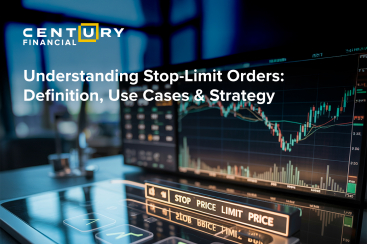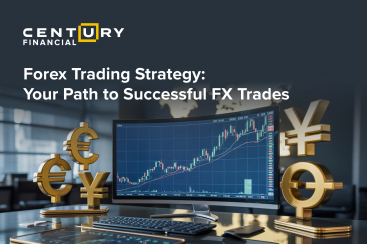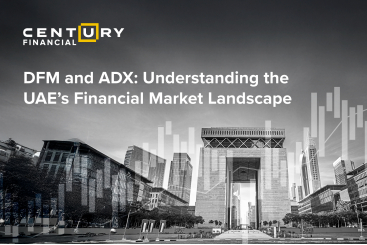

What do satellite images of Costco parking lots tell a hedge fund manager? Or what does a surveyor’s data indicate about the number of trucks leaving Pepsi’s factories? Aside from predicting its sales and revenues, it gives traders an opportunity to develop strategies to book considerable profits. And that is how quantitative trading works, using mathematical and statistical data models and computation to identify opportunities in the financial markets.
By implementing modern technologies on massive databases, quantitative trading delivers a comprehensive analysis of the various trading opportunities available in the market. It strips complex market patterns into numerical values and ignores qualitative analysis that is powered by subjective factors like expert advice or change in management.
As quantitative trading requires a tonne of computational power, historically large institutional investors and hedge funds have used it. However, with technology making improvements, there has been a considerable rise in individual investors seeking to utilize it. Quantitative trading is often associated with high-frequency trading (HFT), where the strategy is to use computer programs to trade several different positions within a short period of time. As most opportunities need to be identified and executed instantly, HFT firms depend on the strategies of quantitative traders.
For traders who use quantitative strategies, sourcing price and volume data are crucial elements. In fact, the more data, the better. True, the results of quantitative data may not always be accurate, but they will, in most cases, be satisfactory. After all, the forecast is derived from historical and present data.
Quantitative vs algorithmic trading
While they overlap, they are separate techniques. Where algorithmic trading uses automated systems to analyze chart patterns, qualitative traders use statistical methods to identify opportunities.
Quantitative |
Algorithmic |
| Quantitative traders use models to identify opportunities but open the position manually | Algorithmic systems will consistently execute on your behalf |
| Use advanced mathematical methods | Rely on more traditional technical analysis |
| Use lots of different datasets | Only use chart analysis and data from exchanges to find new positions |
Quantitative Trading Systems
For quantitative trading to work, systems are developed to discover the best mathematical probabilities. There are many systems but they will have four main elements: Strategy, Backtesting, Execution and Risk Management.
Quantitative Trading Systems
For example, investing in the stocks of various companies researching and manufacturing self-driven cars, companies working on technology that could support self-driven vehicles and companies supplying parts needed by self-driven vehicles could form a good thematic investment fund for those who believe that self-driven cars are going to bring about a structural shift in the way the automobile industry functions.
Strategy
This is essentially about research. Here, the strategy is to gather all the necessary data to come up with a plan that delivers maximum returns with minimal risks.
Backtesting
Here the identified strategy is applied to historical data to see how well it has performed in the market. The past is no indicator of future performances but is a sign of what to expect from the markets. It also allows the strategy to be tweaked, optimized and expose inherent flaws.
Execution
In every trading system, there is a need for an element of execution. They can be manual, semi-manual and automated. The key considerations for execution include trading costs, slippage and broker interface.
Risk Management
Trading financial markets is an inherently risky endeavour, which is why, risk management must be a component of quantitative trading systems. Quantitative traders are likely to face market risks, diverse assets, technology risks, broker risks, and even personality risks. Adhering to strict risk management will keep strategies protected while opportunities open up. Remember, a fully automated strategy does away with emotions, making it immune to human biases.

Quantitative trading strategies
From the straightforward to the complicated, traders deploy a number of strategies:
Mean reversion
Based on the idea that extreme prices are rare and the price of financial assets will always average out in the long run, the defined deviations will always represent an opportunity to trade. So, if the price of a stock falls below the average price, it’s an invitation to buy and, when it is lower, an opportunity to sell.
Momentum Trading
As the name suggests, momentum trading follows the trends. It is about identifying a significant market movement as it is about to begin and flow with it till it ends. It could be a model based on the trading patterns of institutional investors or practices based on volatility breakouts.
ETF rule trading
Here, the strategy is based on the relationship between an index and the exchange-traded fund (ETF) that monitors it.
Statistical arbitrage
Building on the theory of mean reversion, statistical arbitrage trading is a group of similar stocks that should perform similarly on the market, dependent on various factors. If any particular stock in that sector outperforms or underperforms, they present an opportunity.
Quantitative volatility trading
Here, the strategy is to develop programs that can offer opportunities based on changes in volatility. The strategy can be quickly implemented in shorter timeframes.
Quantitative trading is gaining popularity and as technology gets more democratized, it is likely to grow, representing a holistic way to trade. If you wish to explore quantitative trading strategies, you can open a demo account with us.
The content in this blog, including any research, analysis, opinions, forecasts, or other information (collectively, "Information"), is provided by Century Financial Consultancy LLC (CFC) for marketing, educational, and general informational purposes only. It should not be construed as investment advice, a recommendation, or a solicitation to buy or sell any financial instruments.
This Information may also be published across various channels, including CFC’s website, third-party platforms, newsletters, marketing materials, emails, social media, messaging apps, webinars, and other communications. While CFC strives for accuracy, we do not guarantee the completeness, reliability, or timeliness of any content. Any decisions made based on this Information are at your own risk. CFC accepts no liability for any loss or damage arising from its use.
Trading financial products involves significant risk and may not be suitable for all investors. Please ensure you fully understand the risks and seek independent professional advice if necessary.
Please refer to the full risk disclosure mentioned on our website.









.png)
.png)
.png)
.png)


